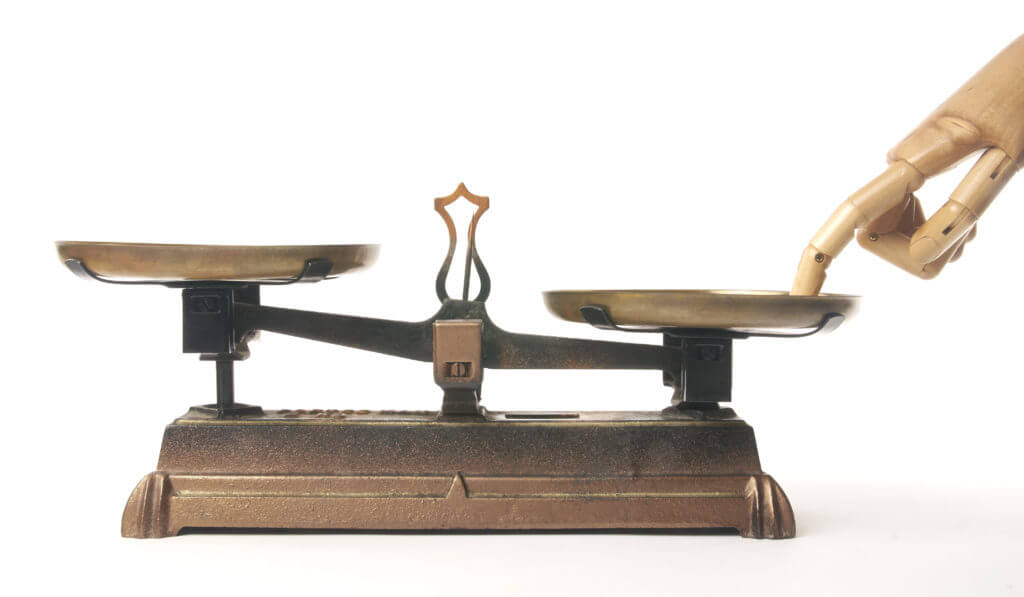Though there have been some strides in the wage gap, some glass ceilings remain stubbornly in place. They hold qualified women back from climbing career ladders and reaching a senior product leadership position.
Product management has long been a field where women have thrived and significantly impacted their companies and industries. Yet, they’re still stubbornly absent from the leadership teams in far too many organizations. What keeps holding them back? How can individual businesses and the profession as a whole level the playing field?
This topic was top of mind as we reviewed the results of ProductPlan’s 2021 State of Product Management Report and discussed those findings during a webinar with Brittany Edwards Co-Founder of IncorpHERated and Product Manager at Crypto Company.
The Numbers Don’t Lie in Senior Product Leadership Positions
Product professionals know not to rely on anecdotal observations, especially when there’s quality data for reference. The story these numbers tell is pretty damning. Women hold 36% of senior product leadership roles and 37% of product management positions.
The numbers might indicate that women aren’t as interested in product jobs, opting for work outside of technology. A percentage decide to pursue design, marketing, sales, or more technical opportunities. But as we peel back the onion, the picture gets more complicated.
The gender divide isn’t just a question of who’s entering the field but also how long they stick around. Women’s average tenure in product management is shorter, leading to more junior female staff.
For example, 22% of female product managers have been on the job less than two years, compared to just 17% of men. Moving down the timeline, 39% of women have 2-5 years experience versus 32% of male product managers.
The trends dissipate over time. Only 10% of women have 10-15 years of experience (compared to 15% of men). In contrast, 8% of women have been in the field for 15+ years versus 11% men.
This disparity in tenure drives who gets the top product jobs as well. Women are less likely to reach the Chief Product Officer, VP of Product, or even Director-level roles. When that’s combined with their lower overall representation among all of the product management, it means far fewer women calling the shots, sitting on management teams, and driving strategy at the highest levels.
Paycheck Problems for Senior Product Leadership Roles
Given the gender imbalance above, it should be no surprise that female product professionals bring home 7% less than men. Once again, a deeper dive into the data uncovers a significant issue.
When comparing men and women with the same experience, female product managers make less money. Entry-level product jobs pay women 7% less on average. And it’s even more pronounced in the 11-15 years of experience range, where men earn 11% more. In fact, at every tier of experience, men average higher salaries across the board.
Downstream Ramifications
Stifled career growth and diminished wages are bad enough. The inequity between male and female product professionals impacts other aspects of their work lives. Women are 14% more likely to frequently experience imposter syndrome, which influences their happiness, productivity, and willingness to take risks and challenge assumptions.
Women were also far more likely to start their own company than men. Typically, women do so earlier in their careers compared to their male peers.
While female entrepreneurship is laudable, there are side effects. The disproportionate representation of women in leadership compounds by siphoning women away from larger, established technology companies. Fewer role models deny the women the opportunity for consideration as “management material.” Moreover, it robs these companies of veteran female leadership, providing important perspectives on female customers and users.
Diversity in board rooms, management teams, and trenches isn’t just about checking boxes and promoting fairness in hiring and promotions, either. Companies are already echoing chambers that don’t include enough variety of lived experience. Limiting female participation in those discussions, debates, and strategy planning sessions does the business and its users a massive disservice.
Turning the Tide
Now that we know the problem, it’s time to focus on solutions. Women want to be product leaders. Organizations need strong female voices in management. A leadership team photo full of white guys doesn’t show potential customers or employees that the organization is taking diversity seriously.
Female product managers face multiple obstacles and additional hurdles. By identifying and acknowledging them, everyone can see the root of the problem, an important first step. Solutions are seldom warmly embraced and sustainable without agreement.
So let’s call out the additional hurdles on a woman’s career path in product:
Avoiding the “baby trap”
For all of human history—as well as the foreseeable future—women are the child bearers. There’s simply no getting around this biological reality for the time being.
And while few people begrudge adults for starting families, society has long held the belief that this is far less disruptive for men. They might take a few days off, but everyone expects their performance to remain consistent regardless of how many kids are at home (although that’s a completely different issue worthy of attention).
Meanwhile, many view female employees in their 20s and 30s as ticking time bombs. Once they’re married, managers pontificate on a pregnancy announcement in a couple of years, followed by maternity leave.
From there, the perception of these women as wild cards grows. Who won’t actually come back from maternity leave at all? Who will ask for an extra three months or a year off to be with their babies? And once they return to work, will they remain as committed? Can they work late, take business trips, attend happy hours, and meet all the other professional and social obligations and expectations of their peers and leaders?
The stress appears to exist primarily in the American workplace. Though some progressive companies have instituted parental leave benefits, the benefits still fall far behind where they should be. Unfortunately, even progressive companies may view those who use these benefits as less committed or underserving of promotions or raises.
Of course, female employees didn’t ask for this prejudicial attitude just because they’re packing ovaries. But this stigma often remains until they’re well past their child-rearing years.
Offer family-friendly parental benefits
Companies can combat this dilemma by making themselves more family-friendly and offering parental benefits equitable for all genders. Accommodating flexible hours and working arrangements while providing generous parental leave for any parent regardless of whether they physically gave birth themselves is key.
But just as important is getting everyone to take advantage of these programs. Management should model this behavior by taking their allowed time off, not working all hours, and encouraging others to do the same. Just like with those “unlimited vacation” policies, if the boss doesn’t use it, no one else will feel like it’s a good career move to do so.
Getting product management on their radar earlier for potential senior product leadership roles
As amazing as we may find this profession, most kids don’t grow up wanting to be product managers. Because they never heard of this kind of job, to begin with. Exposing youth, college students, and young workers to product management and providing opportunities to explore the role is key to getting more women engaged and interested.
With female participation in STEM fields and programs still lagging, there’s even less chance they’ll run across product management and all it has to offer. We must engage with local communities, colleges, and other organizations. Product management becomes a viable career path for more women to explore at an earlier stage of their careers.
Outreach can net better candidates that understand the job and have gotten education and experience under their belt, so they’re more prepared to succeed when given the opportunity.
Instituting gender-blind hiring practices
The name atop a resume creates a bias in the reviewer before getting to a candidate’s experience and qualifications. The situation grabbed headlines for uncovering implicit racial bias, but the same principle holds regarding gender.
The moment someone in HR or a hiring manager sees the applicant’s first name, they’re already making assumptions… whether they want to or not. Obviously, at some point, a candidate’s gender can’t be hidden, but stripping it off of applications and resumes during the initial stages can help female candidates get a little further down the funnel before it comes into play.
Gender-blind screening lets people’s experience, education, awards, and achievements speak for themselves. And once things do progress to phone, video, or in-person interviews, those credentials remain top-of-mind, so hiring managers may give female candidates a fairer shake.
However, companies can go further by requiring that every opening includes at least one female candidate making it to the interviewing stage. Over time, this will increase the number of women hired without creating artificial quotas.
And to ensure qualified female candidates apply, companies can review the language they’re using in their job postings to ensure they’re not scaring people off. They should avoid listing too many prerequisites that may dissuade women from applying because they don’t have every single one of them. Limit what’s mandatory as much as possible and clearly denote which credentials or experiences are merely “nice to have.”
Creating salary transparency
People getting paid different amounts to do the same job isn’t unusual or even unfair in many cases. Some people have more qualifications, perform better on the job, or have been in the role longer than their peers.
But since we know women often make less than their male counterparts across the board and in product, in particular, we must take steps to limit that disparity. Instituting salary transparency is a powerful weapon against letting gender-based bias influence pay rates.
It may be uncomfortable for some to become aware of their salary, but they don’t have anything to be ashamed of unless their pay scale is truly out of whack with their colleagues. This openness creates a platform for employees to negotiate and dispel any rumors or guesses with cold, hard facts.
Working Towards Equity is Never Done
The tech industry looks a lot different than it did thirty or forty years ago regarding diversity in its ranks. Women have attained the highest levels at companies big and small, with glossy magazine profiles to prove it.
But we can’t let the exceptions disguise the fact that there’s still much work to be done. Adopting some of the intentional, inclusive policies above continues the progress already made, building on an even more diverse and representative workforce that can better serve its customers and employees and senior product leadership overall.





